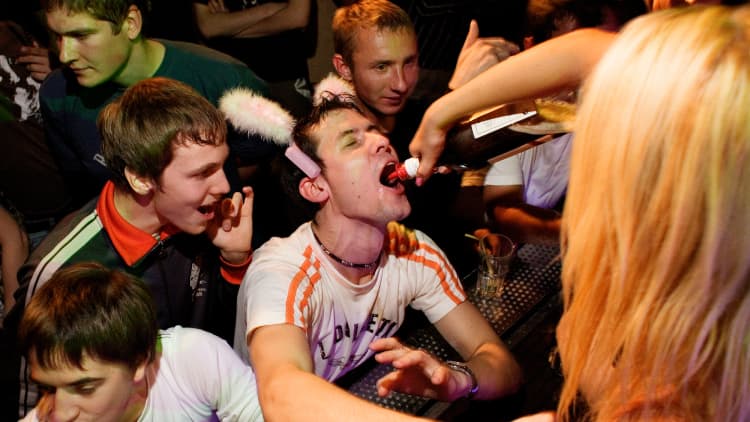
The Organization for Economic Co-operation and Development (OECD) has raised concerns over alcohol consumption across its 34 member states, with drinking among women and children on the rise.
Alcohol consumption in member states is nearly twice the global rate, the global body warned Tuesday. Adults in the OECD drink nearly 10 litres of pure alcohol every year on average -- that's about the same as 100 bottles of wine each.
Average consumption in the OECD had fallen by 2.5 percent over the past 20 years, however.
Read MoreChina and Russia weigh on alcohol sales
The organization ranked Estonia as the country that drinks the most. The eastern European country – along with Russia, India and China -- saw domestic drinking spike over 50 percent during the two decades to 2012.
In countries like Italy, however, consumption fell over 40 percent, while France and Portugal's alcohol use was down over 20 percent.
The OECD's study revealed that while less-educated men were more likely to engage in heavy drinking, the reverse is true for women, with the better educated cohort more likely to drink heavily.
Worryingly, binge drinking is also on the rise for children. Since the early 2000s, the proportion of under-15s who had been drunk rose from 30 percent to 43 percent for boys, and from 26 to 41 percent for girls.
"The cost to society and the economy of excessive alcohol consumption around the world is massive, especially in OECD countries," said OECD Secretary-General Angel Gurría in a press release.
"This report provides clear evidence that even expensive alcohol abuse prevention policies are cost-effective in the long run and underlines the need for urgent action by governments."
On an economic basis, the report suggests that countries plagued by high drinking levels may suffer from lower productivity rates, wages, a higher rate of sick days and weaker employment prospects.
The organization outlines policy tools for reducing alcohol abuse, including restricting bar hours, limiting happy hour promotions and supporting targeted intervention programs.

